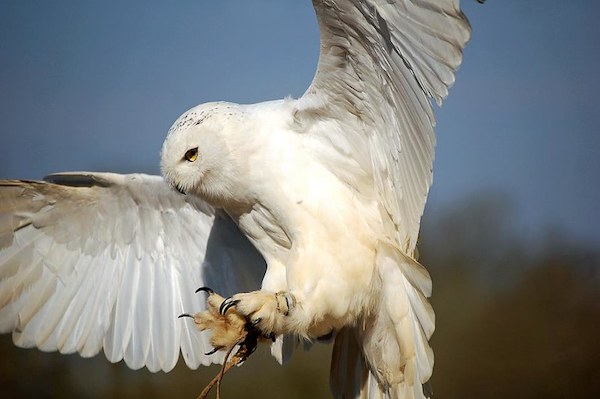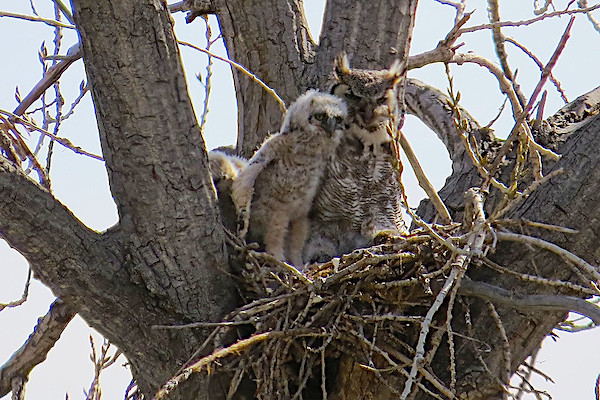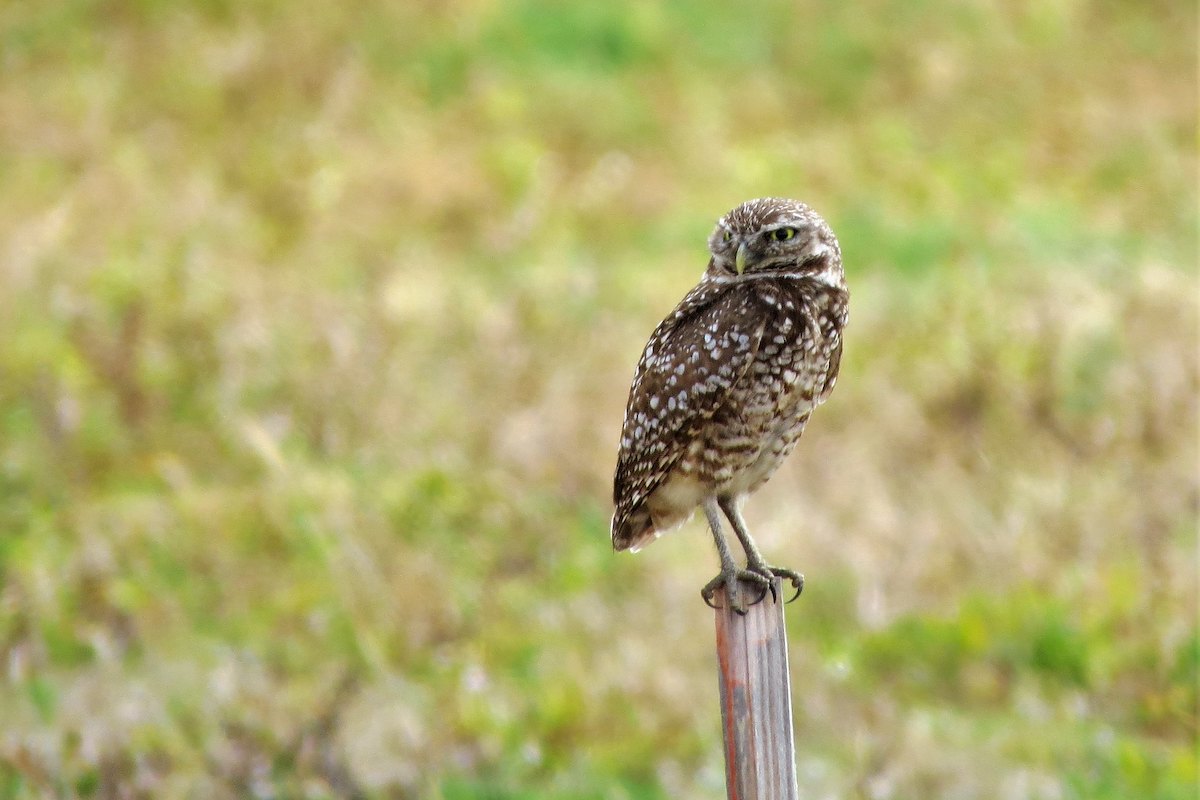Owls are widespread in many nations, yet they are still associated with mystery and superstition. It’s frequently perched in a tree with its legs and feet mostly hidden if you do get to spot one. Many have been curious about recent videos and photos of owls with their enormous legs. We’ll take a look at 10 noteworthy information about owl legs in this piece.
10 FACTS ABOUT OWL LEGS
Seeing the actual length of an owls legs may come as a surprise for a bird that you often see perched and crouched! It’s also a testament to how well-adapted these beautiful birds are to their ecological niche, even if their proportions may at times make them look silly.
1. OWL LEGS HAVE WICKEDLY SHARP TALONED FEET
On each foot, owls have four toes. The outer toe may point in either direction, and two points forward, one point backward. Upon impact, each talon is razor-sharp and can instantly draw blood. Animal trainers and scientists prefer thick leather gloves to handle these birds because of the sharpness of their talons.
As soon as these pincers grab Prey, it’s over.

2. OWLS GRAB PREY FROM THE AIR BY USING THEIR LEGS
To survive, owls must catch and consume other creatures. They are carnivores. These birds of prey perched in a tall tree or snared in an open location such as a field or woodland clearing to successfully hunt. They swiftly capture their target by stretching out their legs and spreading their talons once they’ve located it.
The owl might eat right there after catching its meal. Nevertheless, the bird is more likely to go to a safe and quiet spot to consume its meal in peace.
3. THE LEGS OF AN OWL ARE LONG COMPARED TO THE SIZE OF ITS BODY
Owls’ legs are often covered by their wings and thick layers of feathers, which makes them appear smaller. This is one of the reasons why observing that an owl’s legs may be up to half the length of its body might come as a surprise.
Additionally, to minimize air resistance when flying, owl legs are narrow and thin. In the thigh of the bird, most of the muscle is located up near the body. This helps the owl conserve energy by reducing drag.

4. OWL LEGS HAVE LONGER SHIN BONES THAN THIGH BONES
The opposite of humans, owls have short femurs and long shin bones. This may explain why owls have such weird legs. We don’t see that proportion very often.
Moreover, the joint between an owl’s toes and midfoot is most likely what you think is an owl’s ankle. The toes of owls may be nearly half as long as the thigh bone.
5. OWLS HAVE FEATHERS EVEN ON THEIR LEGS
Leg feathers are important for owls for a variety of reasons. In chilly settings, adult owls develop feathers on their legs to keep themselves warm and shield their sensitive skin. Some have feathered feet, while others do not.
The sound owls make when swooping down to capture prey is decreased with feathers on their legs. The bird can also blend in with its surroundings thanks to this trait.
The snowy owls of Canada and Alaska have feathered legs and feet, which are well adapted to their frigid environment. In comparison, the legs of Burrowing Owls from Florida, Texas, and Mexico are significantly bare.

6. OWLETS HATCH WITH BARE PINK LEGS
Owlets are the name for baby owls. When they emerge from eggs, they are defenseless and blind. This changes quickly. On those exposed legs, owlets grow quickly thicker.
The owl may develop feathers faster or slower depending on the species of owlet. In colder climates, owlets are more likely to develop thick down along their legs than in temperate and tropical environments.
Babies look rather thin during the period when they’re covered in soft down, but have not yet developed into adult feathers. In comparison to their parent, their legs seem to be longer, and their whole body seems to be tall and thin.
The adults, on the other hand, have the same proportions but seem rounder with shorter legs because their adult feather layers really bulk up the look of their form.

7. OWLS CAN WALK AND EVEN RUN
Owls can walk and even run on the ground thanks to their powerful legs. While they can’t lash out at prey while they’re standing, it helps them hop from limb to limb and travel from one point to another. It isn’t ideal, but it helps them get around.
Ground-dwelling life is more suited to burrowing owls. They have strong legs and can swiftly enter and exit huge subterranean tunnels. They may even chase and catch lizards on the ground on occasion.
8. OWLS “FISH” WITH THEIR LEGS
Some owls, such as the Snowy Owl, use their legs to capture fish. The bird waited for a fish to approach the water’s surface while lying flat on a rock near a stream, as John Audubon observed it. The owl responded by striking out with its talons, snatching the fish, and devouring it.
Some owl species may perch on a nearby tree while waiting for prey in a stream or lake. They swoop down, skim the surface of the water with their talons, and capture their target once they have spotted it.

9. OWLS OFTEN USE THEIR FEET LIKE HANDS
An owl feeds itself by using its feet and legs once it captures a mouse or bird. It may return to a tree and devour the prey there. The owl leads the victim to its beak by using its talons. Its meals are usually consumed in one gulp.
While they rip pieces of meat off for their chicks, mother owls use their legs to hold the prey still. Owlets will take prey from their parents’ talons as soon as they reach a certain age and can swallow it whole.
10. OWL FEET CAN “RACHET” ONTO A PERCH SO THEY CAN RELAX THEIR MUSCLES WHEN THEY REST OR SLEEP.
Could you sleep while sitting on a pair of monkey bars? It’s simple for owls to achieve this! Perching on small branches and ledges requires their legs and feet to be specially adapted. When hands are relaxed, owls’ feet are closed, but when hands are open, owls’ feet are open. As a result, hours may be spent firmly gripping a tree limb.

CONCLUSION
A thick layer of down and outer feathers may conceal the legs of an owl, but they are still present! An owl’s legs are an integral part of what makes it such a successful and elegant hunter, from capturing prey to assisting with the bird’s insulation against chilly temperatures.
